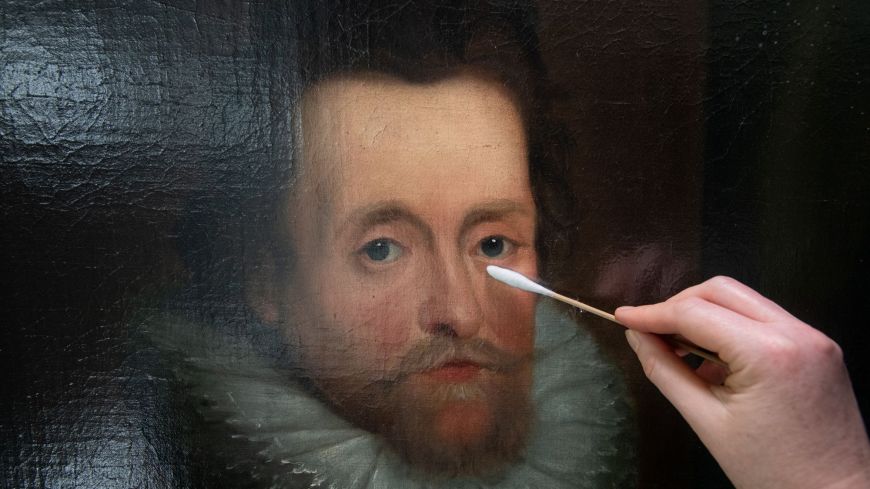
He survived the infamous Gunpowder Plot of 1605 and went on to become the longest-reigning monarch in Scotland's history.
Now, over 400 years later, King James VI of Scotland and James I of England is looking a little sharper after conservators from Historic Environment Scotland (HES) completed painstaking conservation work on his portrait that hangs in the Mary Room at Edinburgh Castle.
As the only son of Mary, Queen of Scots, he also was the only monarch to be born at Edinburgh Castle. He ruled Scotland from 1567 as James VI and England and Ireland as James I following the Union of the Crowns in 1603.
In 1605, he was the target of the Gunpowder Plot, the attempted regicide to blow up the House of Lords during the State Opening of Parliament. The thwarted conspiracy is still marked by Bonfire Night (Guy Fawkes Night) on 5 November each year.
Restoration work
James's portrait, which is on loan from a private collection, had accumulated centuries of surface dirt and there were changes in the protective varnish coatings.
After being brought to HES's conservation studio, at the end of last year, the painting underwent reparative work to stabilise the paint layer. The old, discoloured varnish was carefully removed and replaced with a new protective varnish.
King James VI and I's silvery blue sash and his gold regalia, which had dulled in the centuries since they were first painted, now shine once more.
Previous work
During the consolidation and conservation work, various strands of investigation also became apparent for Ailsa Murray, Senior Paintings Conservator.
Several areas of the painting were retouched during previous conservation treatment, visible as dark purple areas under U.V. light. Through scientific analysis of the fill material, it was found that there had been at least two campaigns of conservation previously.
The original painting had at some point been lined with a second canvas, and the original stretcher, the wooden structure that holds the canvas in place, had also been replaced.
Painter's identity
The other strand of investigation explored the identity of the portrait’s painter. The inscription on the bottom right reads 'Painted by Jameson' superimposed by a second inscription 'School of Vandyck'. It is possible that this relates to the 17th century Scottish portrait painter George Jamesone (1587-1644), though it may have been added later.
The original portrait by Van Dyck of James VI and I forms part of the Royal Collection at Windsor Castle. The portrait was posthumously painted for Charles I and dates from 1632.
If the portrait at Edinburgh Castle was indeed painted by Jamesone, this narrows the window from 1632 to 1644, when Jamesone passed away.
Ailsa Murray, Senior Painting Conservator at HES, said: "This painting has a lot of history to tell, and some of it may yet be uncovered. We hope that through this conservation treatment, the painting will be able to see another 400 years and continue to be enjoyed by visitors from all over the world."

